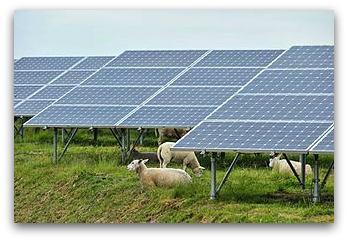
Image: Antalexion
With climate change being a continually rising global dilemma, many scientist have turned their attention to research in the area of renewable energy sources. Even with some of the most brilliant minds working on improving efficiency and price of solar cells, they are still not widely used due to the high cost of materials used to develop the them. Now, a scientist may be on the path to cracking the code on material prices of solar cells by using nanotechnology.
Elijah Thimsen, assistant professor at the School of Engineering & Applied Science at Washington University in St. Louis, worked in conjunction with a team of engineers at the University of Minnesota to develop a technique to increase the performance of electrical conductivity.
This from Washington University in St. Louis:
Transparent conductors are thin films, which are are simply ultrathin layers of materials deposited on a surface that allow light to pass through and conduct electricity, a process in which electrons flow through a system. Thimsen and his team found by changing the structure of a thin film made of zinc oxide nanoparticles, electrons no longer flowed through the system in a conventional way, but hopped from place to place by a process called tunneling.
“The new composite became highly conductive,” Thimsen said. “The composite exhibits fundamentally different behavior than the parent compounds. We found that by controlling the structure of the material, you can control the mechanism by which electrons are transported.”
Because they are unsure of the reasoning behind the relationship, more research will be conducted to understand how the structure of the nanoparticle film and the electron transport mechanism are linked.
Additionally, the development also improved the performance of the composite – which could lower the cost of materials used in solar cells and other electronic devices.
The ECS Conference on Electrochemical Energy Conversion & Storage with SOFC-XIV is an international conference convening in Glasgow, and is devoted to the following areas: solid oxide fuel cells, batteries, low temperature fuel cells, electrolyzers, and redox low cells. For more information, please click here.
And don’t forget to check out the important research our scientists are doing in solar energy! Head over to the Digital Library now to check it out!
ICYM: Check out “A Case for Open Access: Accelerating Discovery in Climate Science” by ECS’s own Director of Development & Membership Services, Dan Fatton.


